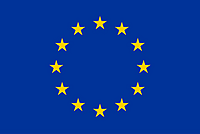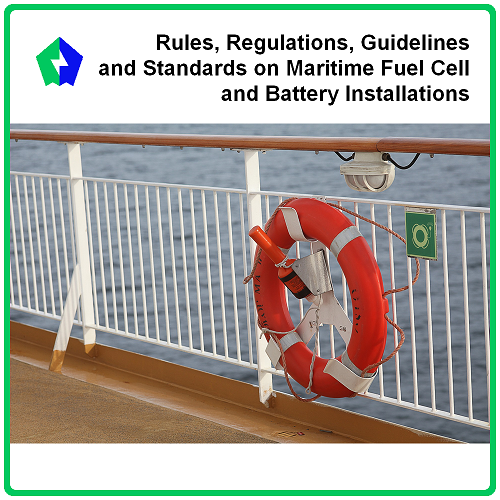The maritime industry and the classification of ships is nowadays a highly regulated area assuring high standards and safety for transported goods, crew and passengers.
Whenever a new system design or technology is being developed for maritime use safety and regulatory requirements in place have to be investigated and compliance of the novel system with all relevant rules, regulations, guidelines, and standards have to be assessed and approved.
Classification and regulation
Classification date back to the middle of the 18th century when no controls on the condition of merchant ships, poor condition of ships and potential overloading made this business very hazardous. With high numbers of both ships and cargo being lost the need to establish objective safety criteria and regular inspections to reduce the frequency of shipwrecks was identified. Then Lloyd’s Register, the first independent Classification Society, was set up to establish safety criteria, conducting regular inspections and ship classification according to these criteria. In today’s practice, before the yard delivers the ship to operation, the employed Classification Society must verify that the applicable class and statutory requirements have been complied with.
Aside from the classification process that radically improved maritime safety, the maritime industry and ship operators are bound by high-level standards for the prevention of maritime pollution and sustainable development given by the International Maritime Organization (IMO) and its subcommittees, such as the Maritime Environment Protection Committee (MPEC) which are responsible for issues relating and develop amendments to e.g. the International Convention for the Safety of Life at Sea (SOLAS) or the International Convention for Marine Pollution Prevention (MARPOL) or other international entities. IMO is the only organization that has adopted energy-efficiency measures that are legally binding across an entire global industry, applying to all countries and thus has a global impact on the sector. These requirements are strong push factors for the maritime industry to innovate and improve ship’s energy efficiency, decrease emissions and overall improve their ecological footprint.
Passenger ships are the most affected by these policies as they have growing pressure from their customers and habitants near ports for a clean and smoke-free environment and cruise operators have to fit even more strident rules in certain ports. The reasoning of the research project NAUTILUS was to develop, test and validate the novel design of the low-emission energy system for large passenger ships that will comply with IMO targets for 2030 and beyond.
Compliance screening for NAUTILUS
It is obvious that compliance of the novel hybrid Genset with all safety requirements, conventions and regulations has to be assured. The first step taken in the early phase of the project was to investigate all safety requirements to be incorporated in the system design. This review was done by Lloyd’s Register, one of the project’s partners.
The Report dealt with the safety requirements for the onboard power generation and power distribution systems and all relevant rules, regulations, guidelines, and standards on marine fuel cell and battery installations were reviewed. The analysis covered the storage and processing of the fuel, the fuel cells and batteries as well as the electrical power and heat generation and distribution. Furthermore, required system redundancies for the storage and processing of the fuel, the fuel cells and batteries as well as the electrical power and heat generation and distribution with required system redundancies were provided.
There were numerous regulations and requirements identified as applicable for the on-board power generation and power distribution systems for Fuel Cells Power Installations such as (i) Regulations and guidelines of IMO (and its committees), (ii) regulations and requirements of the International Association of Classification Societies (IACS), (iii) Lloyds’s Register’s rules, regulations and approval systems, and (iv) a set of international standards.
Detailed regulations for low-flashpoint fuels and gases were identified under the International Maritime Organization (IMO), e.g. in the Lloyd’s Register, Rules and Regulations for the Classification of Ships using Gases or other Low-flashpoint Fuels.
Preliminary Conclusions
Applicable rules and regulations for fuel cells and low-flashpoint fuel installations are based on a goal-based approach with supporting risk assessments and prescriptive requirements to be met. The main objective of these requirements is to provide a safe and environmentally friendly design, construction and operation of ships and in particular their installations of systems for propulsion machinery, auxiliary power generation machinery and/or other purpose machinery using gas or low-flashpoint fuel as fuel. The safety, reliability and dependability of the systems shall be equivalent to that achieved with comparable conventional oil-fuelled main and auxiliary machinery. Although minimum requirements e.g. on some power sources are provided in this report it shall be noted that the outcome of a specific risk assessment and meeting the functional requirements that might affect the necessary system redundancies, electrical power, heat generation and distribution.
#NAUTILUS_2020 #maritime #technology #compliance #safety #regulations #decarbonisation #SOFC #LR
This project has received funding from the European Union’s Horizon 2020 research and innovation program under grant agreement No 861647.
Stay in touch with us!
#NAUTILUS_2020 #propulsionsystem #sustainableshipping #battery #fuelcell #cruiseships
***
⇒ Follow us on Twitter/LinkedIn to be on board.
Follow #NAUTILUS_2020
NAUTILUS is a short for Nautical Integrated Hybrid Energy System for Long-haul Cruise Ships.

This project has received funding from the European Union’s Horizon 2020 research and innovation program under grant agreement No 861647.

